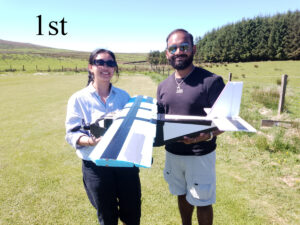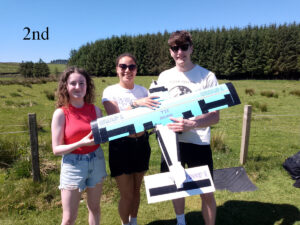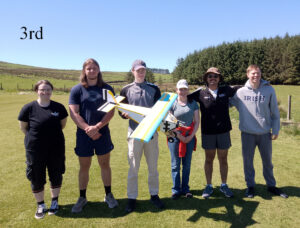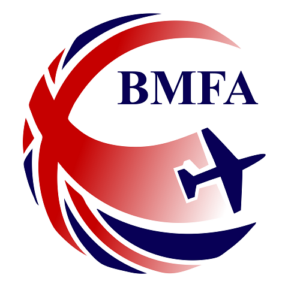In May 2025 the Clyde Valley Flyers M A C hosted a competition organised by Strathclyde University Engineering faculty. As part of their third year design course the students work in teams of five or six to design and build a radio-controlled aeroplane capable of carrying a payload consisting of tennis balls.
This competition was based on the one run annually by the BMFA for university students. But when the BMFA moved the competition from Elvington, near York, to Buckminster the logistics became too problematic for Strathclyde, and so they started their own in-house competition. Part of the problem is that this design class had become so popular that, instead of 3 or 4, sometimes 5 teams, this year they had 15 teams of 6 students to accommodate.
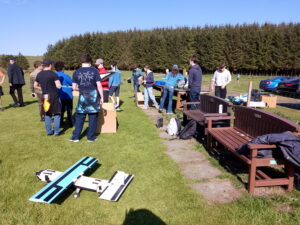
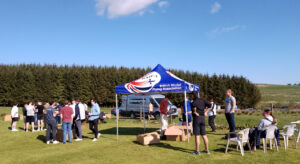
The Clyde Valley Flyers offered some technical advice, the use of their flying site and, in support of the University staff on the flying site, several club members including a pilot. Three days were booked in case of inclement weather. On day one the forecast was bad, so day two became the flight test day on which fifteen models were presented.
A couple were rejected as unflyable. We suspect that the students mixed up their plus and minus signs at the design stage, a mistake blindingly obvious to experienced modellers. Of the ones that flew, a couple crashed due to stability problems (CG too far back or too small a fin) or structural failures (motor mount or undercarriage mainly). All the teams were delighted when their aeroplane took off, and totally thrilled when it landed.

Competition day a week later, was the fun part, and eight models flew. The three best, that had recorded decent scores in the first round, competed in the second round. The score was the number of tennis balls that the team could load in their aeroplane, and unload into the arrival box after the pilot flew a right hand circuit with a left hand orbit on the downwind leg. They had ten minutes, and one 2200 mAh battery. All three finalists scored thee flights, and the winning ball-count was 38. The teams were thrilled with their day, which was just a bit of fun, as the marked Design Course ended with the test flights.
